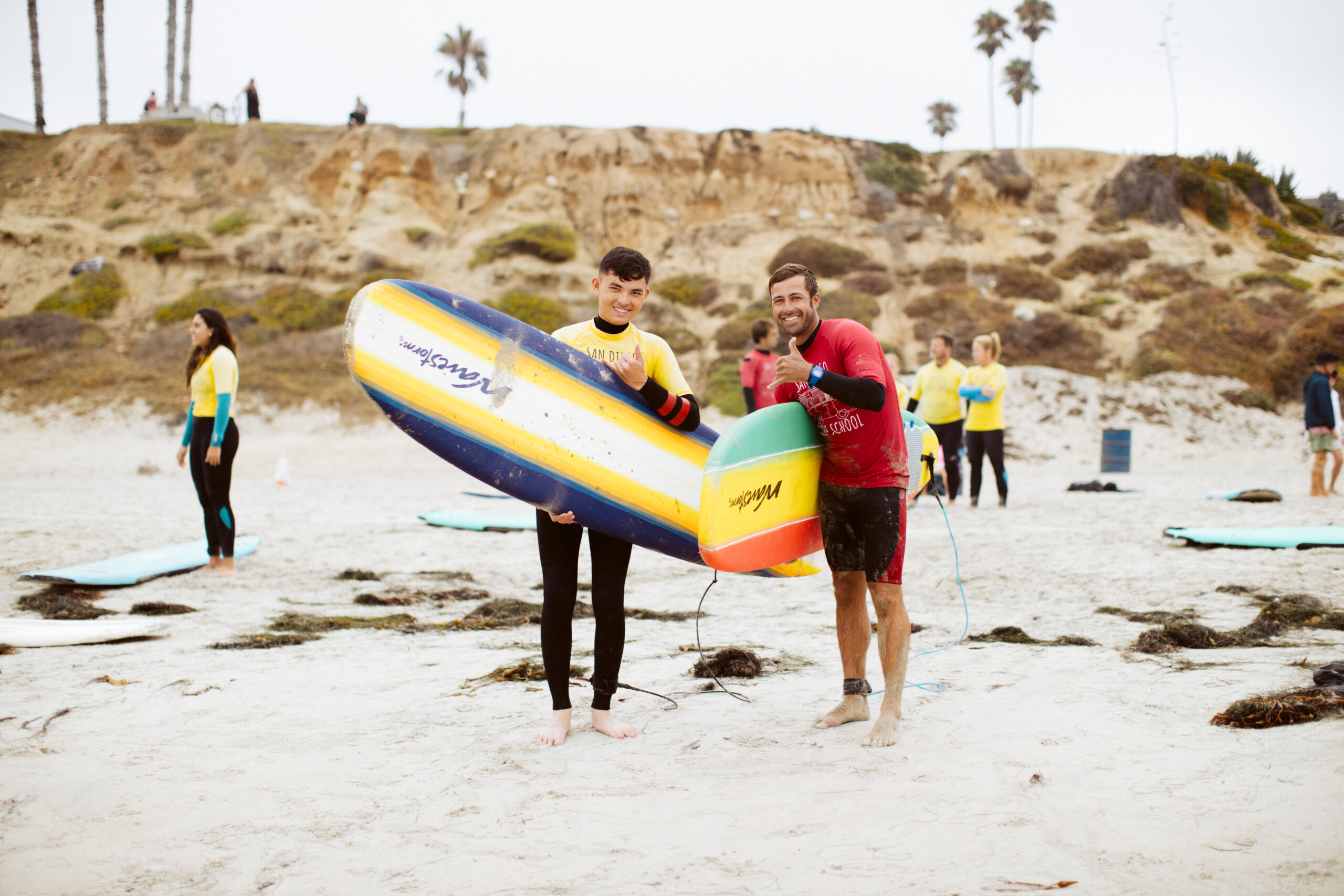Not all wetsuits are created equal. One crucial factor that sets them apart is the type of seams used in their construction. At San Diego Surf School, we want to ensure our students are well-prepared. So here’s a quick guide on the different types of wetsuit seams you might encounter when gearing up for your next surf lesson.
1. Overlock Stitching
Overlock stitching is the most basic type of seam found in wetsuits. This method involves sewing the edges of neoprene together in a way that creates a durable, but less flexible seam. It’s a cost-effective option, but there’s a trade-off—overlock seams can be bulky and let some water in, making them less ideal for colder conditions.
2. Flatlock Stitching
Flatlock seams are another popular choice, especially in wetsuits designed for warmer waters. The panels of neoprene are stitched together in a way that creates a flat seam, reducing bulk. This technique is more comfortable than overlock stitching and provides good flexibility, but like overlock, it can allow some water to seep through.
3. Glued and Blind Stitched Seams (GBS)
Wetsuits with GBS seams are designed for colder waters. In this method, the neoprene panels are first glued together, then stitched halfway through, creating a nearly watertight seal. The seams are much more durable and flexible than overlock or flatlock stitching, and they significantly reduce water entry. This means you’ll stay warmer for longer, even in chilly waters.
4. Taped and Liquid Sealed Seams
For the ultimate in warmth and durability, look for wetsuits with taped or liquid-sealed seams. These are often found on higher-end wetsuits. Taped seams involve placing a strip of tape over the seams to reinforce them, while liquid-sealed seams are treated with a rubber-like substance that makes them entirely waterproof.
Why Wetsuit Seams Matter for Your Surf Lessons
Choosing the right wetsuit isn’t just about fashion or comfort—it’s about safety and performance. The type of seams in your wetsuit affects how warm you stay in the water, how flexible you are on your board, and how long you can comfortably surf without needing to take a break.
At San Diego Surf School, we make sure all our students have the best gear recommendations based on the season, water temperature, and their surfing goals. Whether you’re signing up for your very first surf lesson or you’re looking to advance your skills, the right wetsuit can make all the difference in your surfing experience.
So, when you’re preparing for your next lesson, take a moment to think about the conditions you’ll be surfing in and the type of seams your wetsuit has. We promise it’ll make those waves even more enjoyable!











